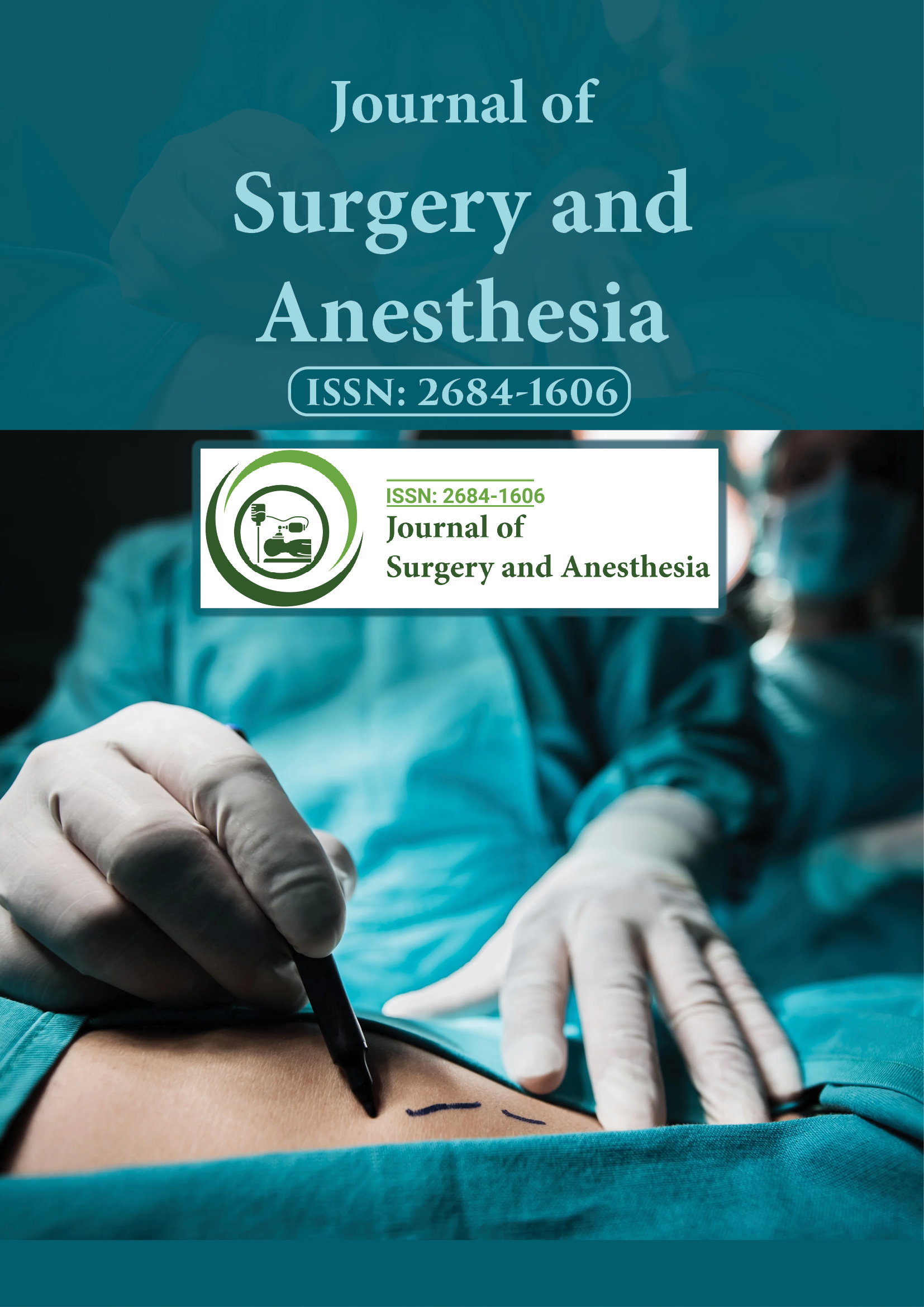Indexed In
- Google Scholar
Useful Links
Share This Page
Journal Flyer

Open Access Journals
- Agri and Aquaculture
- Biochemistry
- Bioinformatics & Systems Biology
- Business & Management
- Chemistry
- Clinical Sciences
- Engineering
- Food & Nutrition
- General Science
- Genetics & Molecular Biology
- Immunology & Microbiology
- Medical Sciences
- Neuroscience & Psychology
- Nursing & Health Care
- Pharmaceutical Sciences
Perspective - (2025) Volume 9, Issue 1
Surgical Site Infection: A Persistent Challenge in Modern Surgery
Mary Krakowski*Received: 01-Mar-2025, Manuscript No. JSA-25-29046; Editor assigned: 03-Mar-2025, Pre QC No. JSA-25-29046 (PQ); Reviewed: 17-Mar-2025, QC No. JSA-25-29046; Revised: 24-Mar-2025, Manuscript No. JSA-25-29046 (R); Published: 31-Mar-2025, DOI: 10.35248/2684-1606.25.9.278
Description
Surgical Site Infections (SSIs) remain a significant postoperative complication despite advances in surgical techniques, aseptic protocols, and antimicrobial therapies. Defined as infections that occur at or near the surgical incision within 30 days of an operation or up to 90 days in cases involving implants-SSIs account for nearly 20% of all healthcare-associated infections. They contribute to increased patient morbidity, prolonged hospital stays, additional surgical procedures, and substantial economic burdens. Understanding the risk factors, mechanisms, and prevention strategies is crucial to improving surgical outcomes.
SSIs can be categorized into three types: superficial incisional, deep incisional, and organ/space infections. Superficial infections involve only the skin and subcutaneous tissue, while deep infections affect deeper soft tissues such as fascia and muscle. Organ/space infections extend to any part of the anatomy that was manipulated during surgery, excluding the incision itself. Each type presents unique challenges in diagnosis and management, emphasizing the importance of timely identification and appropriate intervention.
Multiple factors influence the risk of SSIs. These include patient-related variables such as advanced age, obesity, diabetes, smoking, immunosuppression, and poor nutritional status. Procedural factors such as the duration of surgery, emergency operations, wound classification, and adherence to sterile techniques also play critical roles. Moreover, lapses in perioperative antibiotic prophylaxis and improper sterilization practices significantly elevate infection risks.
Pathogens responsible for SSIs are predominantly bacteria, with Staphylococcus aureus including Methicillin-Resistant Strains (MRSA) being the most commonly isolated organism. Gram-negative bacilli and enterococci also contribute, particularly in abdominal and gastrointestinal surgeries. The ability of these pathogens to form biofilms on surgical implants further complicates treatment, often necessitating device removal.
Prevention of SSIs is multifactorial, requiring an evidence-based approach. Preoperative strategies include optimizing patient comorbidities, controlling blood glucose levels, skin decontamination, and appropriate hair removal techniques. The use of prophylactic antibiotics timed within one hour before incision has been shown to reduce infection rates significantly. Intraoperatively, minimizing traffic in the operating room, maintaining normothermia, ensuring adequate oxygenation, and using sterile barriers are essential. Postoperatively, wound care practices and early identification of infection signs remain crucial components of prevention.
Enhanced Recovery after Surgery (ERAS) protocols have been associated with lower SSI rates, partly due to standardized perioperative care and early mobilization. Additionally, technological innovations such as antimicrobial sutures, negative pressure wound therapy, and robotic-assisted surgeries have shown promise in further reducing SSIs. Nevertheless, widespread implementation and cost-effectiveness of these technologies remain under investigation.
The global burden of SSIs is particularly profound in low- and middle-income countries, where resource limitations, overcrowded hospitals, and inadequate infection control practices exacerbate the problem. International efforts, including the World Health Organization’s Global Guidelines on the Prevention of Surgical Site Infections, aim to harmonize and elevate standards across healthcare systems.
Despite best efforts, challenges persist. Antimicrobial resistance, evolving pathogen profiles, and variability in surveillance practices hinder uniform progress. Future directions must include robust SSI reporting systems, real-time monitoring tools, and personalized risk prediction models. Integration of artificial intelligence and machine learning in surgical care may offer predictive insights and facilitate timely interventions.
In conclusion, while SSIs remain a formidable challenge in surgical practice, a comprehensive, multidisciplinary approach can significantly mitigate their impact. Continuous education, adherence to guidelines, technological innovation, and equitable healthcare access are key pillars in the ongoing effort to combat SSIs. As the field of surgery continues to evolve, prioritizing infection prevention will remain central to enhancing patient safety and surgical outcomes.
Citation: Krakowski M (2025). Surgical Site Infection: A Persistent Challenge in Modern Surgery. J Surg Anesth. 9:278.
Copyright: © 2025 Krakowski M, et al. This is an open-access article distributed under the terms of the Creative Commons Attribution License, which permits unrestricted use, distribution, and reproduction in any medium, provided the original author and source are credited.
